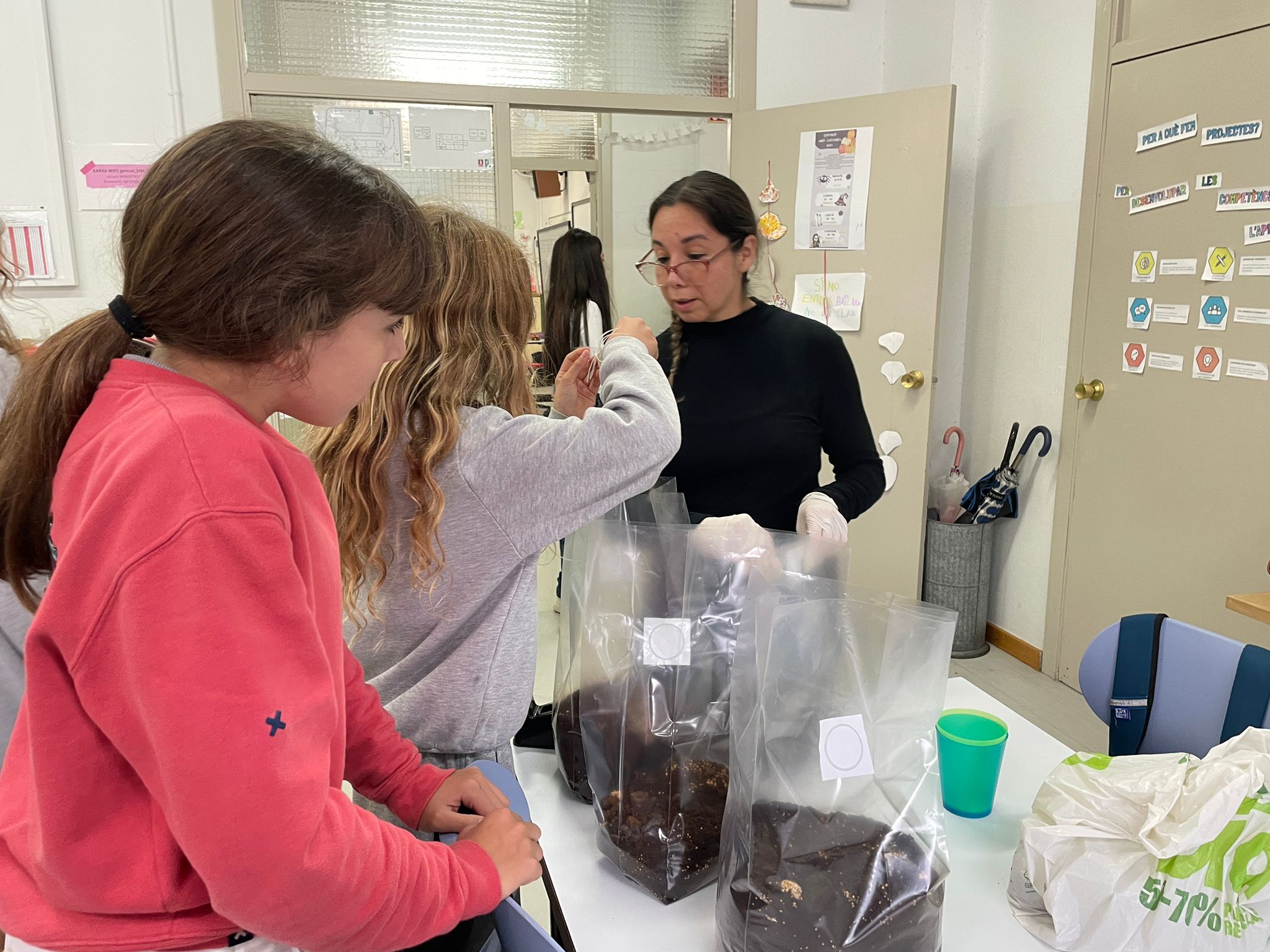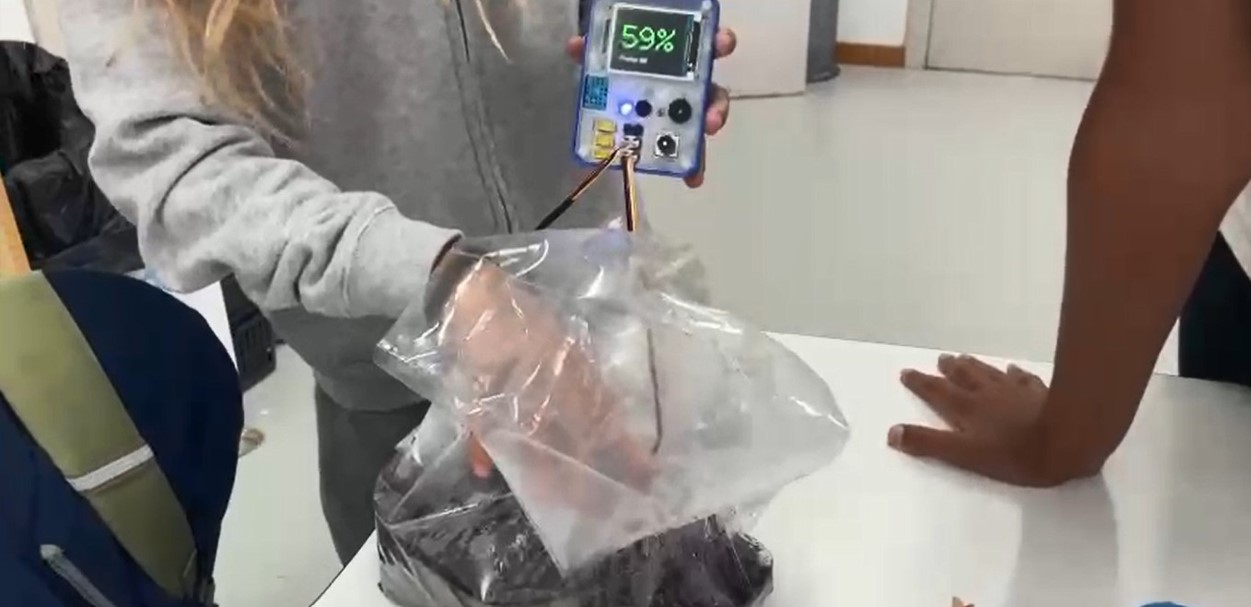🔬The Mushroom Cultivation Project at Escola Joan Miró
Learning Science with Food Waste
As part of the Foodshift Pathways project, students and teachers from Escola Joan Miró participated in a mushroom cultivation activity. This practice included key stages such as an introduction to the Fungi Kingdom, the preparation and sterilization of substrates, inoculation, and monitoring with P-Bits to control variables like temperature and humidity.
Introduction to the Fungi Kingdom and Substrate Preparation
The project began with an introduction to the Fungi Kingdom, where students explored the characteristics and role of fungi as decomposers in ecosystems. They learned that fungi transform organic matter into nutrients, closing the natural cycle. Additionally, they studied the scientific method, as this framework guides every step of our project.

After the introduction, the students prepared various substrates – coffee grounds, straw, sawdust, and egg cartons – to provide the mushrooms with the necessary nutrients.
Inoculation Phase: Beginning Mycelium Growth
The students reached the inoculation phase, where mushroom mycelium was introduced into the prepared substrates. Each group inoculated their substrates with a small amount of mycelium, ensuring it was evenly distributed to optimize growth. Labeled polypropylene bags were used to maintain the substrates under controlled conditions, and some samples were placed in different light and humidity environments to observe the impact of these variables. Additionally, sugar was added to some samples to test the hypothesis that sugar accelerates the process.

During this phase, the students recorded their observations in scientific journals and took photographs of each step of the process. This documentation will be key to comparing growth in the coming weeks and evaluating the effect of each variable on the development of the mushrooms.

Preparation for the Next Phase: Monitoring Variables
The students monitored the temperature and humidity of the substrates. In this section, tools like the P-Bit, which we use in this practice, or the Smart Citizen Kit can be used.
Reflections and Expectations
During the course of the activity, an unexpected challenge arose: the appearance of mold on some substrates. Due to the practical nature of the project and classroom circumstances, the affected substrates were discarded, and no further analysis of the mold was conducted. However, this setback is an inherent part of the learning process in any scientific endeavor.
The collaboration between teachers and students to address this situation highlighted the importance of teamwork and adapting to real-world challenges. Their active participation allowed the project to move forward while reflecting on key aspects that could be improved in future experiments, such as material sterilization, environmental conditions, and substrate handling.
The experience also underscored the significance of flexibility and curiosity as pillars of the scientific method. Although the mold was not the subject of a specific study, its occurrence provided a valuable opportunity to discuss with students the nature of biological processes and the importance of maintaining a controlled environment in experiments.

In conclusion, the challenges encountered in this activity are not only part of the learning process but also pave the way for new questions and improvements in future projects. The involvement of teachers and students in this project reflects their commitment to practical and meaningful education, demonstrating that even unexpected setbacks are a powerful tool to foster critical thinking and scientific resilience. Thank you, teachers of Escola Joan Miró ❤️
Last updated